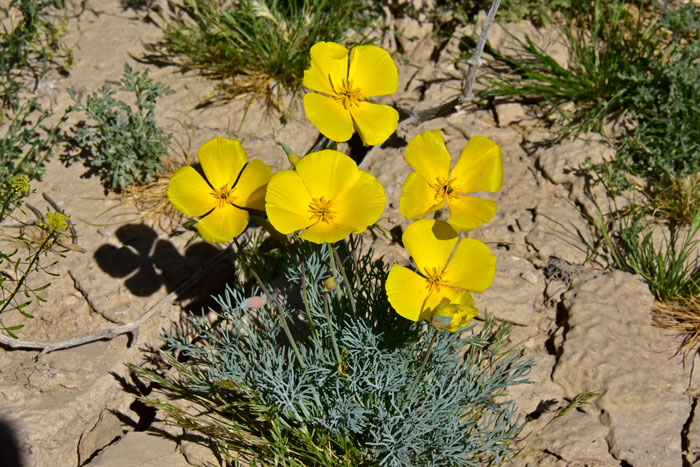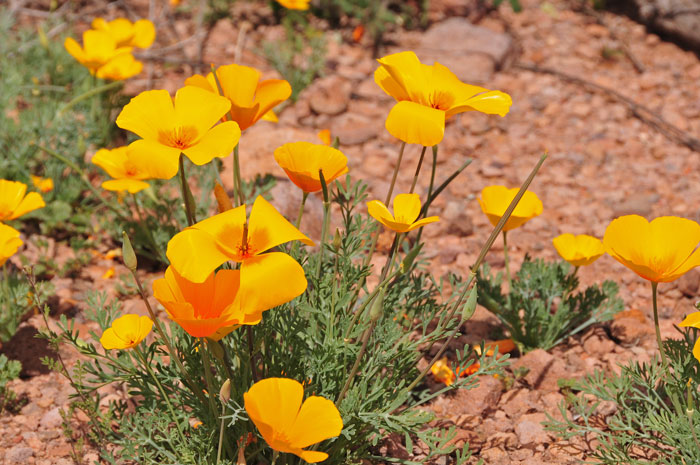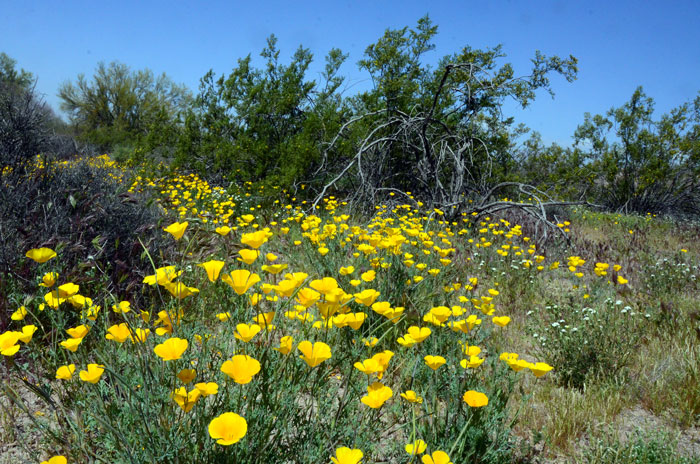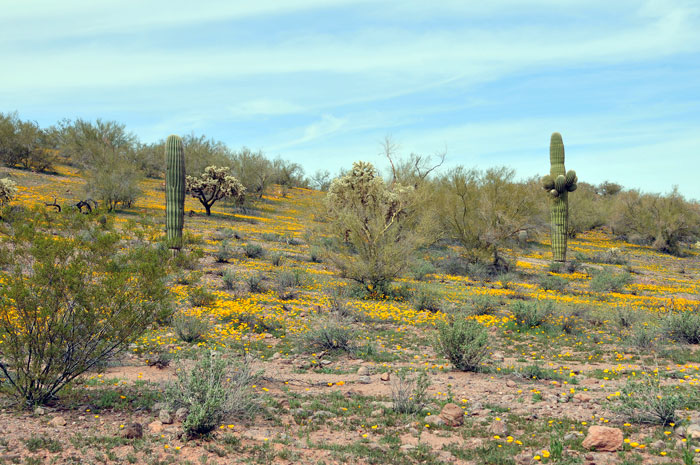Eschscholzia californica, California Poppy




Scientific Name: Eschscholzia californica - (esh-SHOLE-tzee-a)
Common Name: California Poppy
Also Called: California Goldenpoppy, Desert Gold Poppy, Mexican Poppy (Spanish: Amapola, Amapola del Campo, Amarilla)
Family:
Papaveraceae or Poppy Family
Synonyms: (Chryseis californica, Eschscholzia californica var. californica, Eschscholzia oregana, Eschscholzia peninsularis, Eschscholzia straminea, Eschscholzia tenuisecta)
Status: Native
Duration: Annual, perennial.
Size: Up to 20 inches or more.
Growth Form: Forb/herb; stems leafy and branching above the base, some plants appear to have no stems (acaulescent).
Leaves: Blue-green, glaucous; leaves alternate, feathery-like, deeply dissected lobes.
Flower Color: Yellow, orange or yellow-orange; solitary on slender long stems, 4 petals close at night, 2 sepals fruit a tapering capsule up to 3.5 inches long, dehiscent capsule opens at maturity releasing numerous tiny brown seeds.
Flowering Season: February to May, February to September (CA), March to May (TX)
Elevation: Below 4,000 feet.
Habitat Preferences: Rocky hillsides, plains, mesas, disturbed areas, roadside and washes.
Recorded Range: California Poppy is broadly distributed across the United States; throughout most of the south- and north-west states and scattered throughout most of the mid-central states. It is also native to northern Baja California and northwest Mexico. California Poppy is naturalized in Canada, Alaska and Hawaii.
In Arizona California Poppy occurs throughout most of the state with few records in Navajo and Apache counties.
North America & US County Distribution Map for Eschscholzia californica.
U.S. Weed Information: Eschscholzia californica is listed in: Invasive Exotic Pest Plants in Tennessee. Plants included here may become weedy or invasive.
Invasive/Noxious Weed Information: No information available.
Wetland Indicator: No information available.
Threatened/Endangered Information: No information available.
The Plant List includes 12 accepted species names for the genus Eschscholzia.
There are 2 sub-species of Eschscholzia californica:
Eschscholzia californica subsp. californica, California Poppy, distribution above and
Eschscholzia californica subsp. mexicana, Mexican Poppy, AZ, CA, NM, NV, TX, UT
Comments: California Poppy is the official state flower of California. California Poppies grow in spectacular dense patches or carpets of yellow-orange in late winter and early spring. These flowers are happy growing in both the Mojave and Sonoran deserts. This plant makes an excellent desert or rock garden specimen, easy to grow, drought tolerant and naturally reseeds.
In Southwest Desert Flora also see; Desert Poppy, Eschscholzia glyptosperma and Pygmy Poppy, Eschscholzia minutiflora.
The genus Eschscholzia is named after Dr. Johann Friedrich Eschscholtz. Eschscholtz (1793 to 1831).
The California Poppy has been prepared for a variety of interesting uses; California Indians have used parts of the plant as a toothache remedy, the Costanoans uses include as an insecticide, sedative, pediatric aid and poison (the plants avoided by pregnant or lactating women as smell my be poisonous); and also as a poison by the Mahuna. See ethno-botanical uses at Native American Ethnobotany, University of Michigan, Dearborn.

